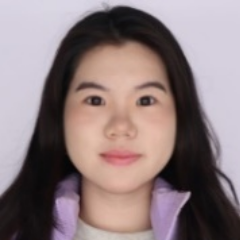
Cennuo Hu
Work place: Department of Computer Science, College of Science, Purdue University, West Lafayette, IN 47907, USA
E-mail: hu945@purdue.edu
Website:
Research Interests: Computer Security, Software Engineering
Biography
Cennuo Hu was born in 2005. Now she is a student in the Department of Computer Science of the College of Science at Purdue University, West Lafayette, IN 47907, USA. Her main research interests are software engineering and computer security. She is an IEEE student member and has three invention patents.
Author Articles
Method of Performing Operations on the Elements of GF(2m) Using a Sparse Table
By Ivan Dychka Mykola Onai Andrii Severin Cennuo Hu
DOI: https://doi.org/10.5815/ijcnis.2024.01.05, Pub. Date: 8 Feb. 2024
For the implementation of error-correcting codes, cryptographic algorithms, and the construction of homomorphic methods for privacy-preserving, there is a need for methods of performing operations on elements GF(2m) that have low computational complexity. This paper analyzes the existing methods of performing operations on the elements GF(2m) and proposes a new method based on the use of a sparse table of elements of this field. The object of research is the processes of operations in information security systems. The subject of research is methods and algorithms for performing operations on elements GF(2m). The purpose of this research is to develop and improve methods and algorithms for performing operations on elements GF(2m) to reduce their computational complexity. Empirical methods and methods of mathematical and software modeling are used in the research. Existing and proposed algorithms are implemented using the C# programming language in the Visual Studio 2015 development environment. Experimental research of existing and developed algorithms was carried out according to the proposed method, which allows to level the influence of additional parameters on the results of the research. The conducted research on methods for performing operations on the elements GF(2m) shows the expediency of using a sparse table of field elements. This approach makes it possible to reduce the amount of RAM required for the software and hardware implementation of the developed method compared to the classical tabular method, which requires storage of a full table of correspondence of the polynomial and index representation of the field elements. In addition, the proposed method gives an increase in speed of more than 4 times for the operations of calculating the multiplicative inverse element and exponentiation. As a result, the proposed method allows to reduce the computational complexity of error-correcting codes, cryptographic algorithms, and the homomorphic methods for privacy-preserving.
[...] Read more.Information Technology for Generating Lyrics for Song Extensions Based on Transformers
By Oleksandr Mediakov Victoria Vysotska Dmytro Uhryn Yuriy Ushenko Cennuo Hu
DOI: https://doi.org/10.5815/ijmecs.2024.01.03, Pub. Date: 8 Feb. 2024
The article develops technology for generating song lyrics extensions using large language models, in particular the T5 model, to speed up, supplement, and increase the flexibility of the process of writing lyrics to songs with/without taking into account the style of a particular author. To create the data, 10 different artists were selected, and then their lyrics were selected. A total of 626 unique songs were obtained. After splitting each song into several pairs of input-output tapes, 1874 training instances and 465 test instances were obtained. Two language models, NSA and SA, were retrained for the task of generating song lyrics. For both models, t5-base was chosen as the base model. This version of T5 contains 223 million parameters. The analysis of the original data showed that the NSA model has less degraded results, and for the SA model, it is necessary to balance the amount of text for each author. Several text metrics such as BLEU, RougeL, and RougeN were calculated to quantitatively compare the results of the models and generation strategies. The value of the BLEU metric is the most diverse, and its value varies significantly depending on the strategy. At the same time, Rouge metrics have less variability and a smaller range of values. In total, for comparison, we used 8 different decoding methods for text generation supported by the transformers library, including Greedy search, Beam search, Diverse beam search, Multinomial sampling, Beam-search multinomial sampling, Top-k sampling, Top-p sampling, and Contrastive search. All the results of the lyrics comparison show that the best method for generating lyrics is beam search and its variations, including ray sampling. The contrastive search usually outperformed the usual greedy approach. The top-p and top-k methods do not have a clear advantage over each other, and in different situations, they produced different results.
[...] Read more.Other Articles
Subscribe to receive issue release notifications and newsletters from MECS Press journals